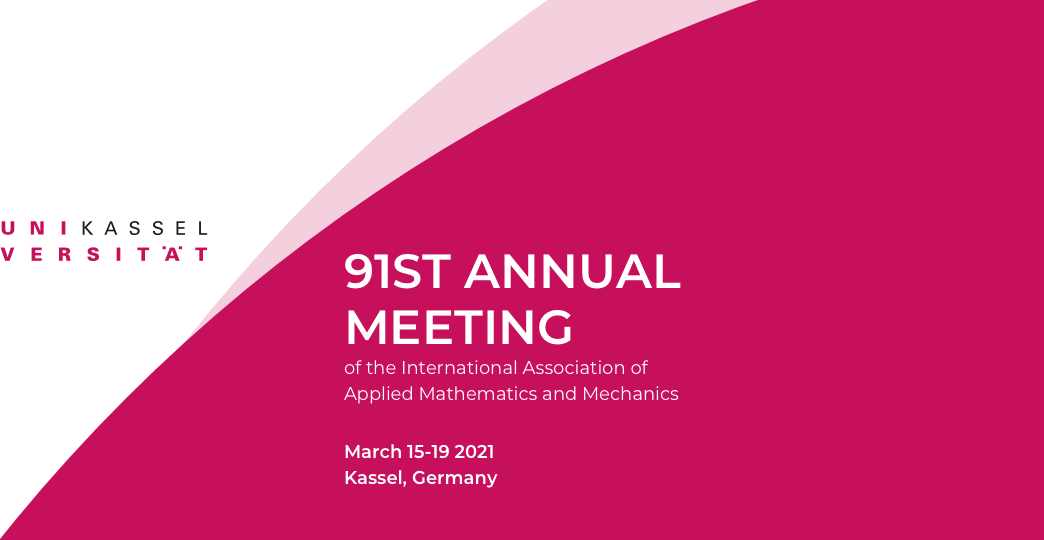MS 1 Computational Photonics
Photonics is the key of several new technologies like communication technology, autonomous vehicles, lighting, photovoltaics, or welding and soldering by lasers. Simulations in photonics are needed in order to design and optimize the corresponding optical components. Obviously, this requires to solve Maxwell’s equations by suitable discretization methods like edge elements or suitable finite difference discretization methods. However, in many applications simulation of optical waves or beams are needed not only in the range of the wavelength, but on a computational domain, which is much larger than the wavelength. Furthermore, the time dynamic behavior of light has to be studied in applications like laser simulation. Such applications require new simulation techniques and numerical discretization methods. One aim of the minisymposium is to present an overview on new simulation techniques, which are used in computational photonics. In particular, these are new finite element discretization methods and new models and discretization methods for the time dynamic simulation of optical beams. One difficulty of such time dynamic simulations is the strong non-linear behavior of the corresponding partial differential equations. Another difficulty is the spectral behavior of the material parameters and the optical beam. The minisymposium will focus not only on new simulation techniques but also on applications in photonics in natural science and engineering. Among them are laser simulations and simulation of plasmonic effects in nanostructures.
Organizers: Christoph Pflaum (FAU Erlangen-Nürnberg), Bernd Witzigmann (University of Kassel)
MS 2 Symbolic computation methods for differential equations, dynamical systems, and control theory – With special emphasis on biochemical problems
Many new and interesting results have recently been obtained in the area of algebraic methods and symbolic-numeric computation in the qualitative theory of differential and difference equations, and in mathematical systems and control theory. The goal of this minisymposium is to highlight several aspects of this interaction and to present some original contributions in this field to the GAMM community. The cross-fertilization between ODE/PDE theory and symbolic-numeric computation will be demonstrated from various angles. For instance, computational models in systems biology are built from chemical reaction networks and rate laws involving parameters, resulting in large systems of differential equations. Symbolic methods can be combined with model reduction techniques to analyze such biological networks.
Organizers: Werner Seiler (University of Kassel), Eva Zerz (RWTH Aachen)
MS 3 Dissipativity, turnpikes and optimal control
Over the last decades, the development of tailored numerical methods and the formal analysis of finitedimensional and infinite-dimensional optimal control problems has made significant progress evidenced by the continued industrial and academic interest. Nowadays, there is hardly any branch of industry not using optimal control methods. At the same time, the recent development on optimal control problems has seen promising new developments; i.e. in the last 5 years a significant number of papers has investigated the relation between turnpike and dissipativity properties in optimal control [1-6].
Turnpikes are a classical topic in optimal control approaches, originating from the analysis of problems arising in economics and subsequently found to be ubiquitous in all application areas in which optimal control is used. The term turnpike refers to a similarity property of parametric optimal control problems, whereby the initial condition of the dynamics and the horizon length a varied. The phenomenon yields a certain redundancy which can be used for reducing the complexity involved in solving the optimal control problem. The term “turnpike” has been coined by Dorfman, Samuelson, and Solow in the 1950s
[10] and popularized by McKenzie in the 1970s [7] and later [11]; though early reports of turnpike phenomena can be traced back to John von Neuman [9]. The system-theoretic notion of dissipativity is also a classical one; it was introduced by Jan Willems in the early 1970s [12]. However, just recently and motivated by developments in the field of economic predictive control, the close connection between both concepts has been observed and analyzed in a time-invariant finite-dimensional setting [3,4].
The aim of this minisymposium is to bring together leading experts on this topic; thus providing an overview of latest developments and progress with respect to infinite-dimensional systems, differential-algebraic equations, time-varying settings and problems stemming from motion planning of mechanical systems.
Organizers: Timm Faulwasser (Karlsruhe Institute of Technology), Lars Grüne (University of Bayreuth)
MS 4 Advanced experimental and computational techniques in polymer mechanics
To understand the origin of complex physical behaviors in natural and synthetic polymers, conventional mechanical measurements are inadequate because they only provide a macroscopic relation between stress and deformation. In recent years, spectacular developments in experimental techniques and polymer chemistry allow access to real time micro-structural changes of polymeric materials, and therefore can enhance considerably knowledge of polymer physics. However, descriptions of complex physical phenomena may also induce numerical problems such as ill-posedness or ill-conditioning, and require proper computational treatments. The aim of this mini-symposium is to advance common understanding of polymeric materials by gathering polymer researchers from the material science, experimental characterization and computational mechanics and giving them the opportunity to share and exchange their latest ideas. Broad spectrum of topics includes, but is not limited to, molecular sensors, structural and calorimetric investigations, multi-physics constitutive theories and computational analysis for elastomers.
Organizers: Vu Ngoc Khiem (RWTH Aachen), Mokarram Hossain (Swansea University), Jean-Benoit Le Cam (University of Rennes)
